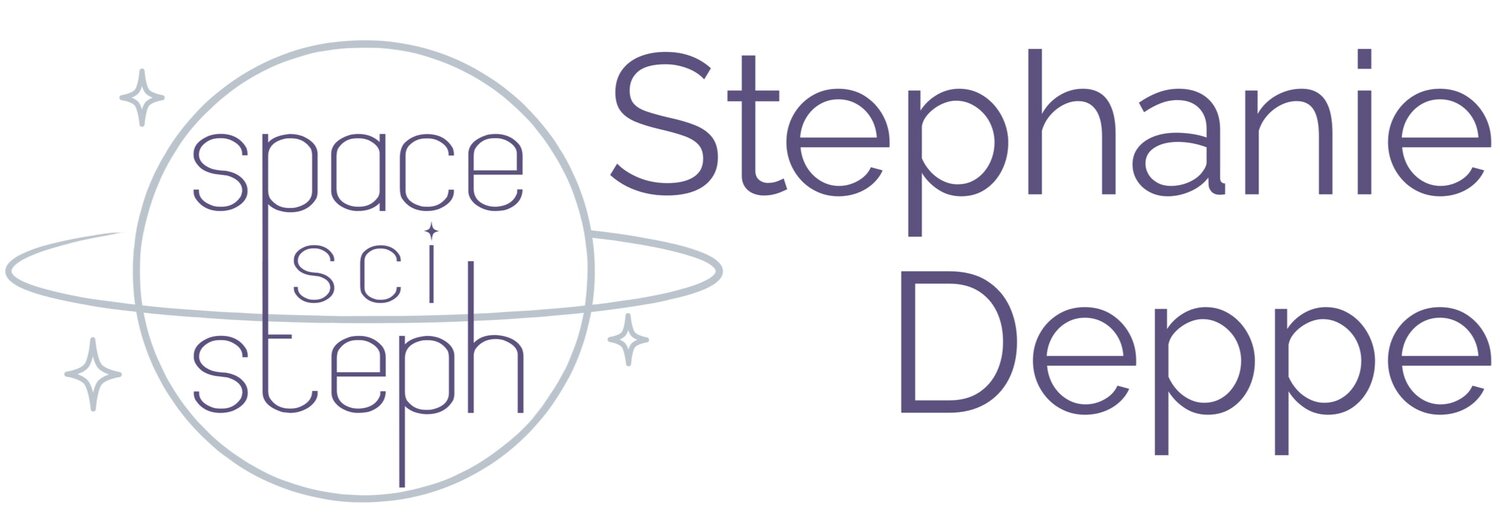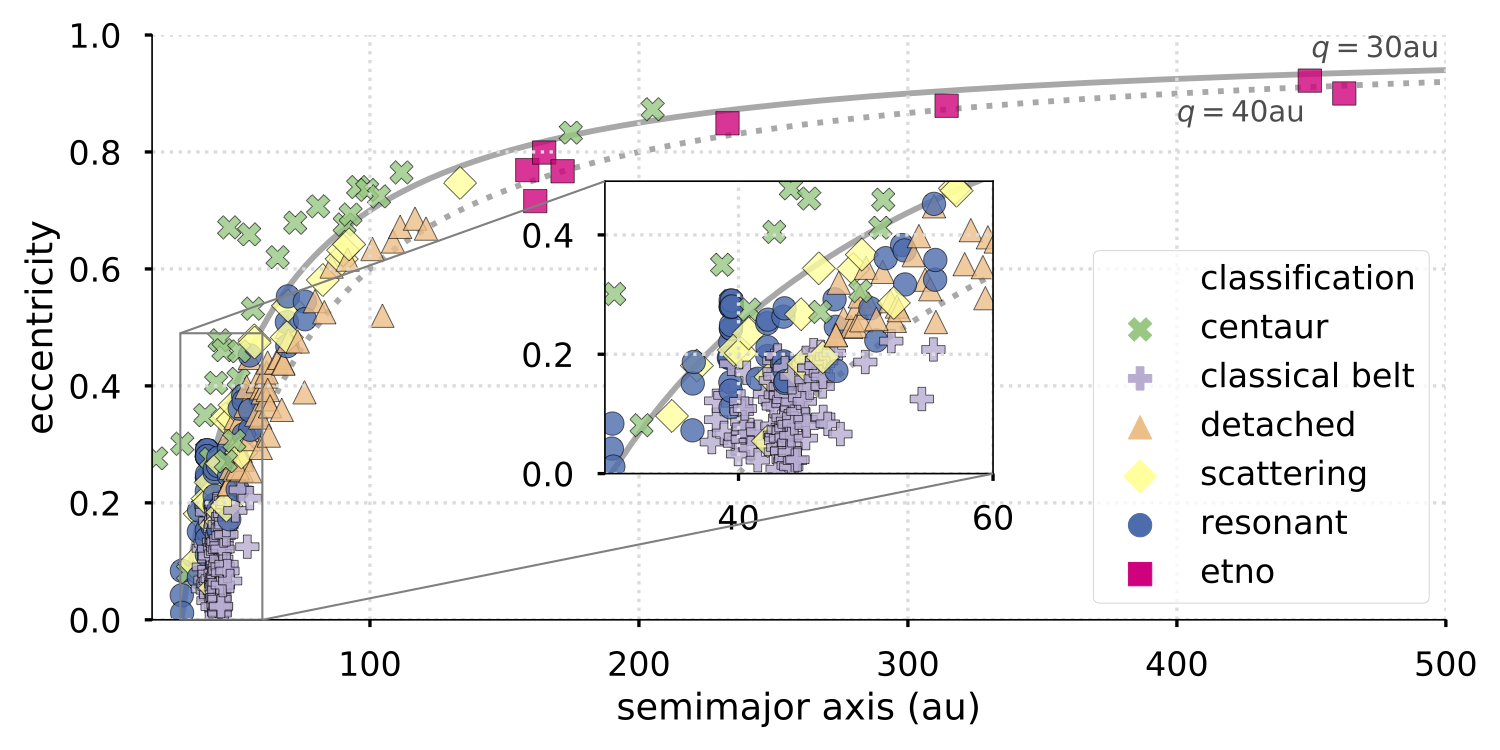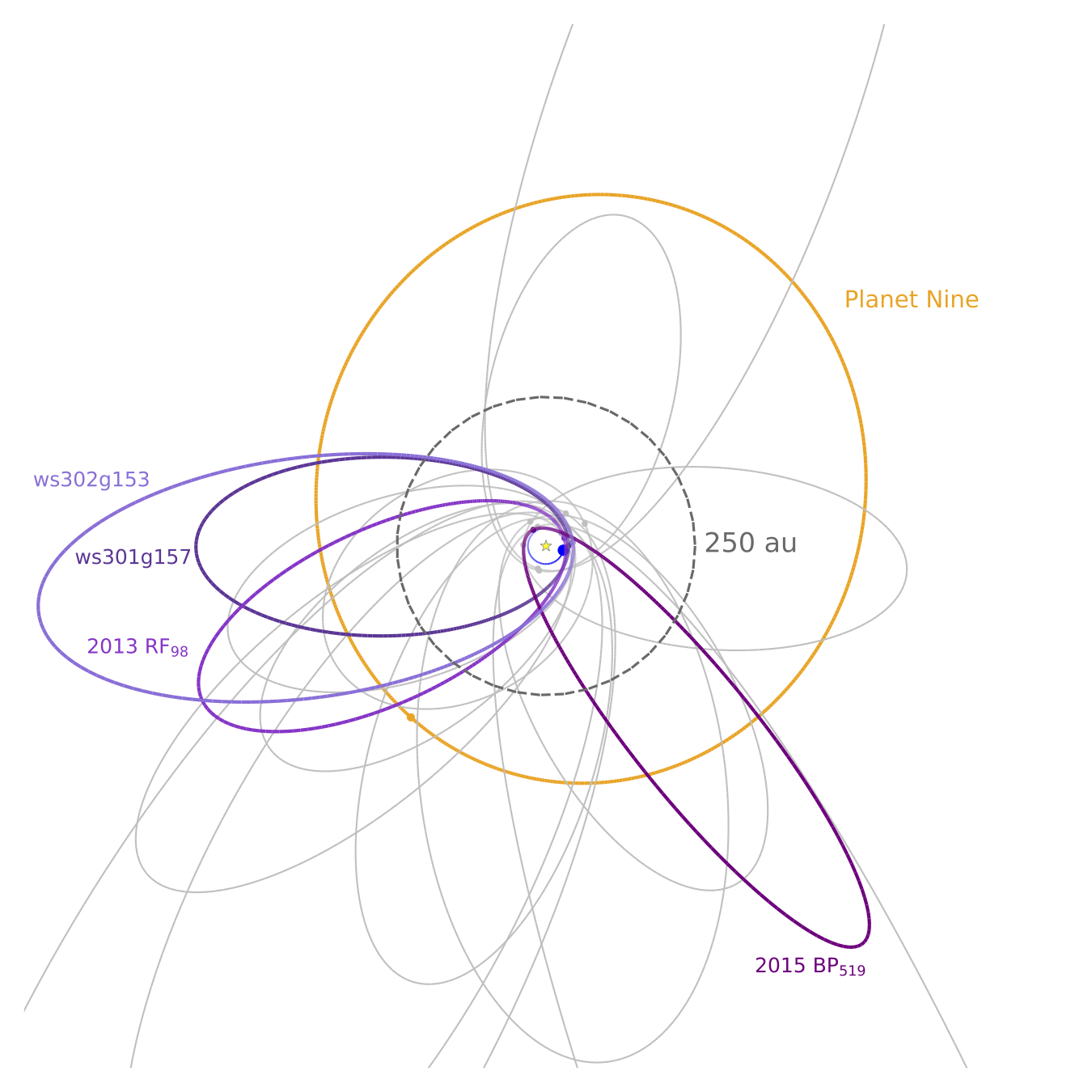Here is a collection of graphics and other visuals I’ve made over the course of my research and science communication career that I’m particularly proud of. Feel free to use, but please attribute credit to Stephanie JH Deppe :)
Discovery of all known trans-Neptunian objects, animated
This video shows the discovery of the trans-Neptunian belt over the course of thirty years. The orbits of the gas giant planets are shown as the colored circles and known dwarf planets appear as blue dots.
Dark Energy Survey trans-Neptunian objects by class
Based in part on the classification scheme in Khain et al, 2020.
This plot shows the eccentricity (how circular or oval-like the orbit is) vs. the semi-major axis (how large the orbit is) of each trans-Neptunian object discovered by DES. The points are coded by classification:
Centaur: semi-major axis > 30au (Neptune’s mean distance from the sun), but closest approach is closer than Neptune.
Resonant: objects that have an integer period ratio with Neptune (e.g. a 3:2 resonant object makes two orbits for every three of Neptune’s).
Scattering: in the process of significant orbital change due to interactions with Neptune.
Detached: non-resonant, non-scattering objects with sufficiently eccentric orbits and high perihelia that they do not interact with Neptune.
Classical belt: Remaining objects with low eccentricity. These objects have been relatively undisturbed over the Solar System’s lifetime.
ETNO: Remaining objects with semi-major axis >250au.
**Note that “ETNO” is not a universally accepted classification, and many people consider these to be either scattering or detached objects.
Extreme trans-Neptunian objects discovered by the Dark Energy Survey (and Planet Nine)
Effectively a top-down view of the distant solar system. The known extreme trans-Neptunian objects (mean distance from the Sun >250au) not discovered by DES are in gray, while the ones we discovered with DES are in purple. The orbit of the proposed Planet Nine is in yellow.
Aurora forecast on earth.nullschool.net
I developed the code to enable the auroral forecasting portion of Cameron Beccario’s site earth.nullschool.net.


